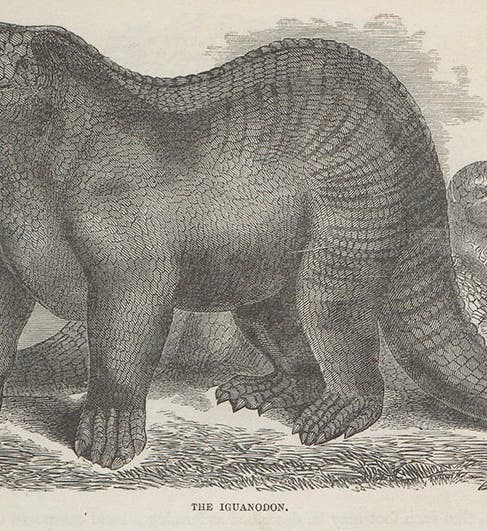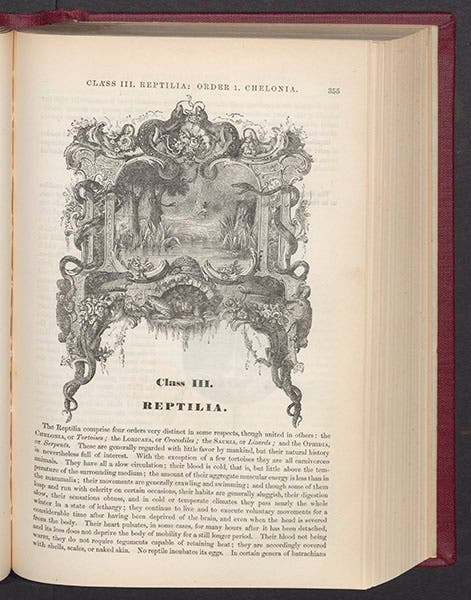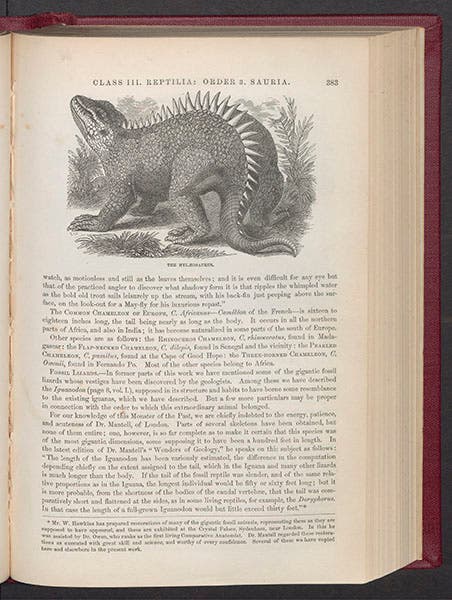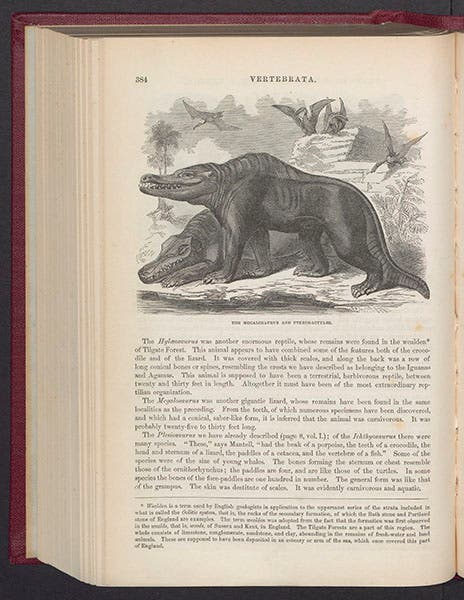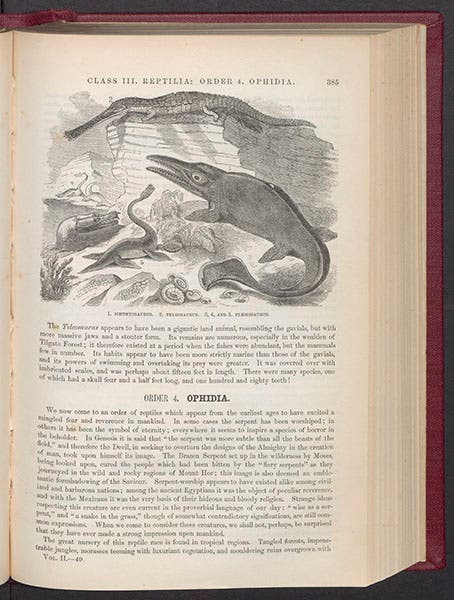Scientist of the Day - Samuel Griswold Goodrich
Samuel Griswold Goodrich, an American author, was born Aug. 19, 1793. Goodrich was a prolific writer of children's books, which he published under the name of Peter Parley. He produced hundreds of these penny publications, on history, fables, the Bible, and occasionally, science. We have one of his Peter Parley books in the Library, The Wonders of Geology (1844), which is openly plagiarized from Gideon Mantell's English book on the subject (The Wonders of Geology, 1838; Goodrich even plagiarized the title!).
Goodrich made quite a lot of money selling his books, and later in life he turned to adult fare, writing now under his own name. We have in the History of Science Collection his Illustrated Natural History of the Animal Kingdom (1859), a two-volume encyclopedia of the natural world, the most notable feature of which is a small article on dinosaurs, the first to appear in any work of this kind. In the section on reptiles (second image), after a discussion of the chameleon, we suddenly encounter a short segment called “Fossil Lizards,” which is illustrated by four half-page wood engravings. They show, in order, an Iguanodon, a Hylaeosaurus, a Megalosaurus with pterodactyls, and an Ichythosaurus accompanied by a Teleosaurus and a Plesiosaurus (first, third, fourth, and fifth images). The first two were discovered by Gideon Mantell, the man whose book Goodrich had earlier plagiarized, and the Megalosaurus was found by William Buckland. All three were named dinosaurs by Richard Owen when he invented that term in 1842.
If you wonder how this hack professional writer was able to reconstruct dinosaurs from the few fossil bones that had been found, well, he was lucky. In 1854, Benjamin Waterhouse Hawkins had produced life-size restorations in concrete of all three dinosaurs plus assorted other prehistoric reptiles such as the ichythosaurs and plesiosaurs, and he had installed them on the grounds of the re-erected Crystal Palace in Sydenham, outside London. Goodrich only had to commission an artist to copy the sculptures, which is just what he did. You can compare the wood engravings in his book with the Hawkins’ sculptures by going to our Scientist of the Day piece on Hawkins, where we showed some of the sculptures.
We displayed Goodrich’s book in our exhibition of long ago called Paper Dinosaurs, which you can still view online. You can see several items by Hawkins there as well.
Goodrich grew up in Ridgefield in southwestern Connecticut, and they have preserved the little one-room schoolhouse that he attended as a child, renaming it the Peter Parley schoolhouse (sixth image). There are no dinosaurs on the grounds.
Dr. William B. Ashworth, Jr., Consultant for the History of Science, Linda Hall Library and Associate Professor, Department of History, University of Missouri-Kansas City. Comments or corrections are welcome; please direct to ashworthw@umkc.edu.

